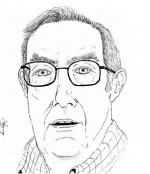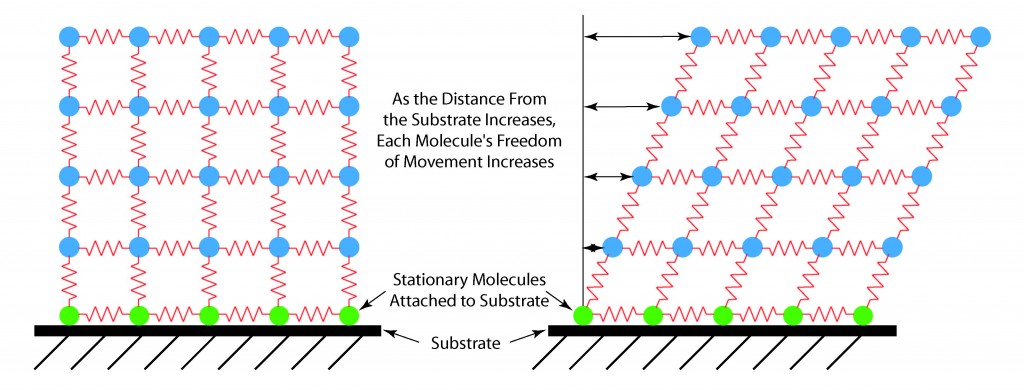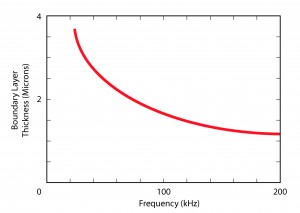 The concept of a barrier layer in ultrasonic cleaning can be a little difficult to understand – in fact, a lot of people don’t even know what “barrier layer” means. In this blog, I’ll attempt to describe what the barrier layer is and how the thickness of the barrier layer is affected by changing ultrasonic frequency.
The concept of a barrier layer in ultrasonic cleaning can be a little difficult to understand – in fact, a lot of people don’t even know what “barrier layer” means. In this blog, I’ll attempt to describe what the barrier layer is and how the thickness of the barrier layer is affected by changing ultrasonic frequency.
The barrier layer is a zone near the surface of a substrate where ultrasonic cavitation can not occur due to physical constraints imposed on the liquid. First, recognize that liquids are made up of individual molecules which interact with one another via molecular attraction. As we saw in the discussion of the propagation of sound waves, if one molecule is displaced, the displacement travels through nearby molecules in a sort of domino effect as the displaced molecule transfers its motion to its neighboring molecules. In the case of the barrier layer, molecules that are held stationary restrain the movement of their nearby neighbor molecules. The stationary molecules are those which are being physically attracted to the part or substrate at the liquid/substrate interface. The molecule immediately adjacent to the substrate can not move (or at least can not move easily). As the distance from the interface is increased, the number of intervening molecules increases. Each added molecule adds its freedom of motion to that of the string of molecules which terminates with the final molecule which is pinned to the substrate. As a result, as the distance from the substrate is increased, the overall freedom of motion of the molecules at any given distance is increased. The following illustration shows this effect.

Although the illustration shows the effect in only one dimension, the reader should realize that the same thing is happening in all dimensions.
Forming cavitation bubbles requires that the molecules of a liquid be able to move a sufficient distance to break molecular bonds to form the cavitation bubble. If the molecules can not move a sufficient distance, a cavitation bubble will not be formed. This, combined with the fact sound has a shorter wavelength as frequency increases and that cavitation bubbles become smaller as frequency increases results in the fact that cavitation bubbles can form closer to a substrate surface at a higher ultrasonic frequency. The “barrier layer” is that zone near the substrate where cavitation bubbles can not be formed at a given ultrasonic frequency. The thickness of the barrier layer decreases as the ultrasonic frequency is increased as described in the chart of barrier layer thickness vs. frequency shown below.

The thickness of the barrier layer has a significant impact on the size of particles that can be removed using ultrasonic cleaning techniques. This relationship and its importance will be described in a future blog.
– FJF –



 English
English Spanish
Spanish Chinese
Chinese Canada
Canada Mexico
Mexico United Kingdom
United Kingdom



